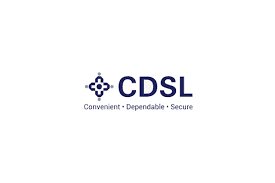All You Need to Know About CDSL Demat Account Statement
Written by Mariyam Sara
5 min read | Updated on October 17, 2025, 14:39 IST

When you buy a share, you are its beneficial owner. The dematerialised or digital share is stored in one of the two main depositories in India: NSDL and CDSL. Your broker might act as a DP (Depository Participant) and facilitate the buying and selling of securities on your behalf. CDSL, or Central Depository Services (India) Limited, primarily caters to retail investors and is linked with most discount brokers and banks.
As part of its transparency and accessibility processes, CDSL sends periodic Demat Account Statements to investors. If you are an investor, you may have received an email from CDSL containing an account statement that lists all your holdings across various mutual funds, equities, and other assets. This statement enables investors to track their securities, monitor their activities, and stay informed about changes to their portfolios. Understanding how to read and access this document is crucial for anyone investing through a CDSL-linked demat account.
What Is CDSL and Its Role in Demat Accounts
CDSL is the go-to depository for brokers and banks in India. It was established in 1999 and is regulated by SEBI. It has played a critical part in transforming the Indian financial system by becoming a crucial agent in the digitalisation and dematerialisation of securities. Due to this, the need for having physical share certificates no longer arises. CDSL maintains records of all securities held in a demat account and facilitates seamless transactions, including buying, selling, pledging, and unpledging of shares.
Understanding the CDSL Demat Account Statement
The CDSL Demat Account Statement is a document that consists of a summary of all holdings and transactions carried out through a CDSL-linked Demat account. The statement includes the following:
- List of securities held (ISIN-wise).
- Quantities of each security.
- Transaction details such as credits (buying) and debits (selling).
- Information on pledged or unpledged holdings, if any.
This statement is sent to the investors on a regular basis to the registered email address. For most users, this is known as the Monthly Transaction Statement or Holding Statement. If there are no transactions in a particular month, the statement may not be sent unless the holding value exceeds a certain limit or the user requests it.
Key Components of the CDSL Statement
Here are the key components of the statement:
- Opening and closing balances of the securities held on the start and end dates of the statement.
- ISIN details of the securities held.
- All transactions carried out during the period were through credit and debit entries.
- Details of any pledged portion of securities pledged.
- Details of locked-in securities, such as ESOP.
How to Access Your CDSL Demat Statement
Besides the periodic statements sent automatically by CDSL, there are different ways through which you can access the CDSL Demat Statement:
-
You can log in to the CDSL Easi website using your BO ID (Beneficial Owner ID) and PAN to view, download, or request transaction statements at any time.
-
You can also download the statement from the website or application of your new-age broker, such as Upstox.
Benefits of Tracking Your CDSL Statement Regularly
There are numerous benefits of tracking your CDSL statement regularly. Here are some of the most critical advantages:
-
It is an excellent source for detecting fraud, as it allows you to locate any unauthorized or suspicious activity (such as the pledging of securities).
-
It helps in verifying the accuracy of the portfolio.
-
It is an excellent tool for tax planning and filing.
-
Overall, it facilitates better decision-making in portfolio management.
FAQs
How can I check my CDSL demat account statement online?
You can access your CDSL demat statement by logging into the CDSL ‘easi’ portal using your BO ID and PAN. From there, you can view, download, or request your holding and transaction statements.
Is the CDSL demat statement the same as the Consolidated Account Statement (CAS)?
No. The CDSL statement shows only holdings in your CDSL-linked demat account. The CAS includes consolidated holdings across CDSL, NSDL, and mutual funds under a single PAN.
How often is the CDSL demat account statement sent?
It is typically sent monthly, provided there are transactions or the value of holdings exceeds ₹50,000. Statements are emailed to the registered email ID.
What is a BO ID in CDSL?
The BO ID (Beneficial Owner Identification Number) is a 16-digit unique ID assigned to every demat account holder by CDSL. It’s required for accessing your account and statements.
What should I do if I haven’t received my CDSL demat statement?
First, check your email’s spam or promotions folder. If not found, ensure your email is correctly updated with your broker or register on the CDSL Easi portal for direct access.
The CDSL demat account statement serves as a vital document for every investor, offering transparency and control over one’s securities portfolio. Whether you're a beginner or a seasoned trader, regularly reviewing this statement can help prevent errors, ensure compliance, and support informed investment decisions. With easy digital access, staying updated on your demat activity has never been more convenient.
About Author
Mariyam Sara
Sub-Editor
holds an MBA in Finance and is a true Finance Fanatic. She writes extensively on all things finance whether it’s stock trading, personal finance, or insurance, chances are she’s covered it. When she’s not writing, she’s busy pursuing NISM certifications, experimenting with new baking recipes.
Read more from Upstox
Upstox is a leading Indian financial services company that offers online trading and investment services in stocks, commodities, currencies, mutual funds, and more. Founded in 2009 and headquartered in Mumbai, Upstox is backed by prominent investors including Ratan Tata, Tiger Global, and Kalaari Capital. It operates under RKSV Securities and is registered with SEBI, NSE, BSE, and other regulatory bodies, ensuring secure and compliant trading experiences.